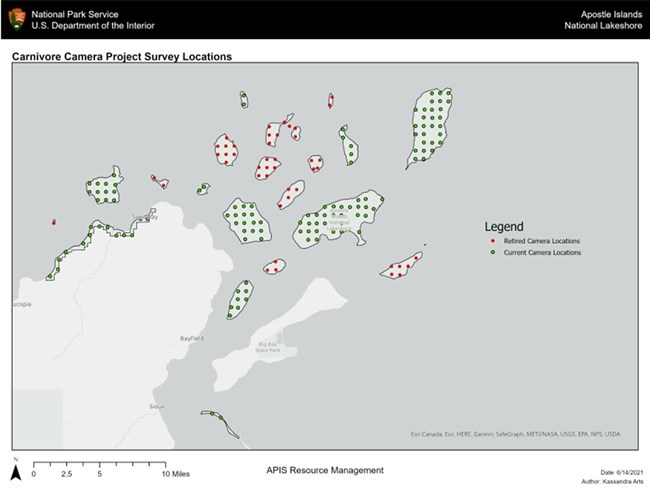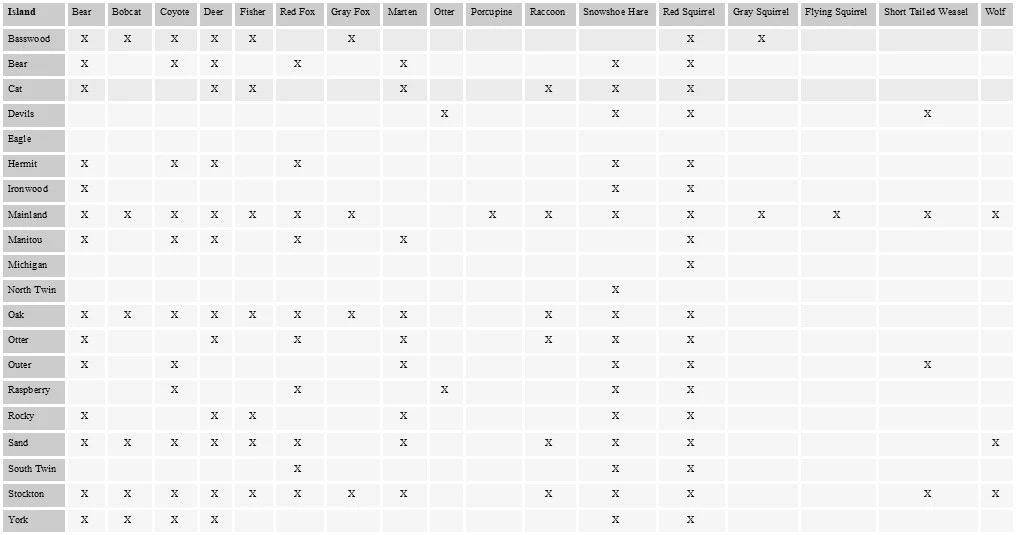Last updated: October 7, 2021
Article
Remote Wildlife Camera Use at Apostle Islands

NPS graphic
Background
Remote wildlife cameras have allowed researchers and park users to take a look at the Apostle Islands like never before. These cameras allow us to see what is going on at various location 24 hours a day 365 days a year, without handling wildlife or disrupting their habitat. Use of cameras within the park started in 2010 focusing on deer populations on Sand Island. Through the use of these cameras, we have been able to observe over 16 mid-sized to large mammalian species in addition to a variety of bird and small mammal species. Every island within the National Lakeshore and the mainland unit has been surveyed in the past 11 years. Remote cameras have recorded over 300,000 camera nights worth of data totaling to over 708,000 photos. Recent use of these cameras has even uncovered a source population of American Marten (Martes americana) that was previously unknown on the Apostle Islands, and other cryptic (secretive) species. Presently, nine sites are being surveyed including: Basswood, Cat, Devils, Long, Oak, Outer, Raspberry, Sand, and Stockton Islands and the Mainland unit (Map to right).

NPS photo
More than a picture
Remote wildlife cameras serve as an important tool, and can do more than provide amazing images of elusive wildlife within the park. Here at Apostle Islands National Lakeshore, cameras have been used to study deer, bear, marten, and large carnivores specifically, while also providing information on a variety of other species. Data collected using these cameras aids researchers in estimating population trends on the islands, assessing how human park use impacts wildlife activity, and annually expanding the list of species known to occupy the islands!
All of this data allows for unique collaborations and partnerships with Northland College and the University of Wisconsin Madison. While cameras are expensive on the front end, they pay for themselves by providing constant non-invasive monitoring in inaccessible locations. This information helps the park monitor and manage wildlife that call these amazing islands home. See the below species list to see which species have been located on what island!

NPS graphic
For more information: Peggy Burkman (Peggy_Burkman@nps.gov) or Julie Van Stappen (Julie_Van_Stappen@nps.gov)
